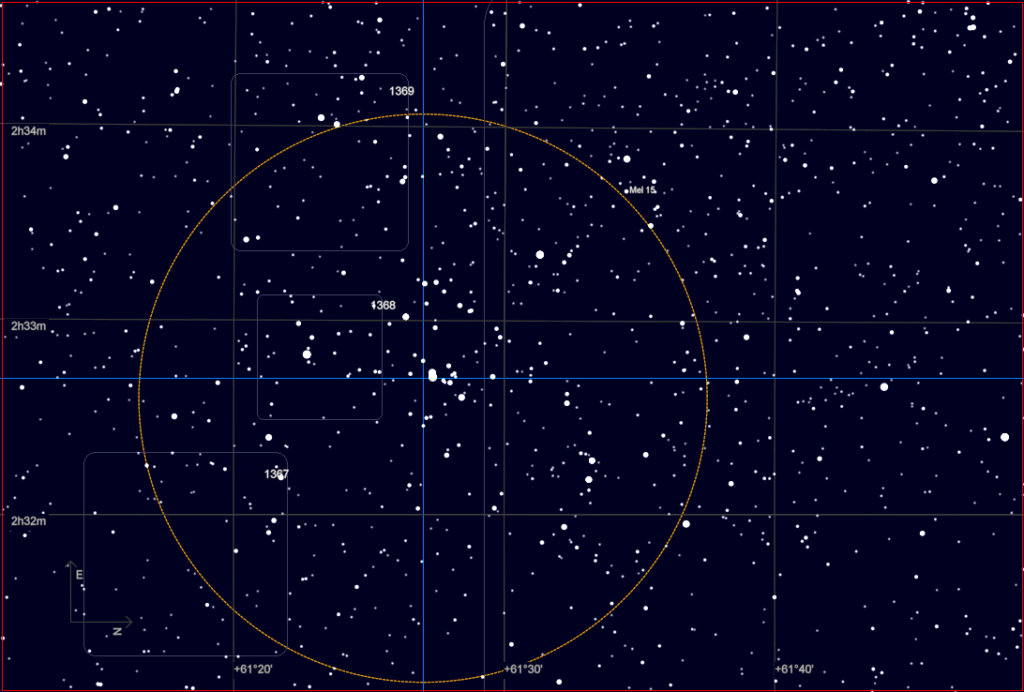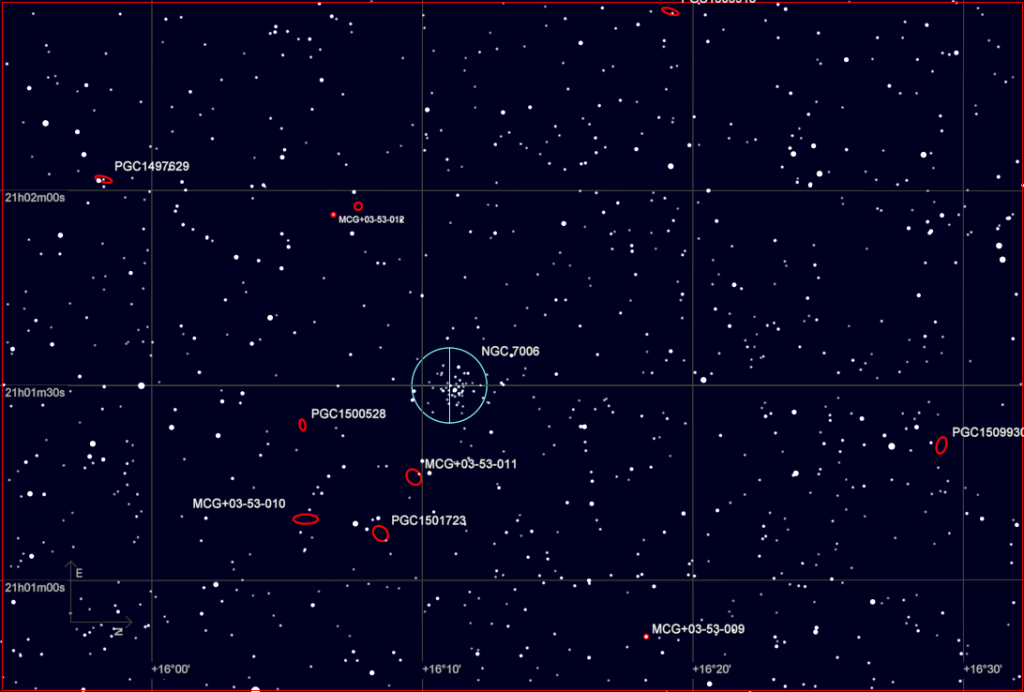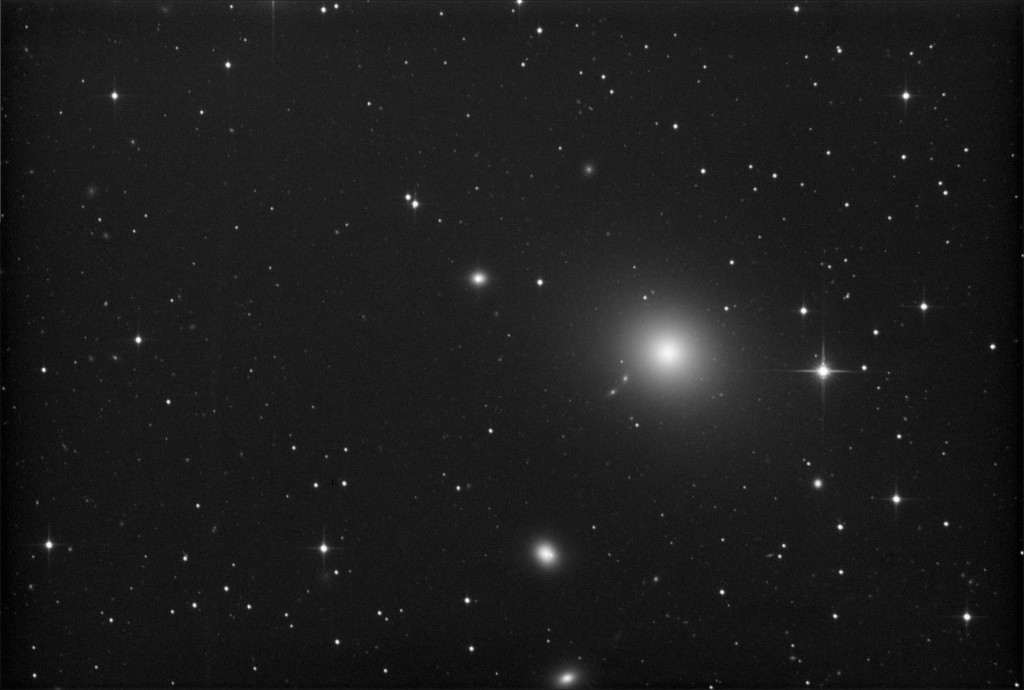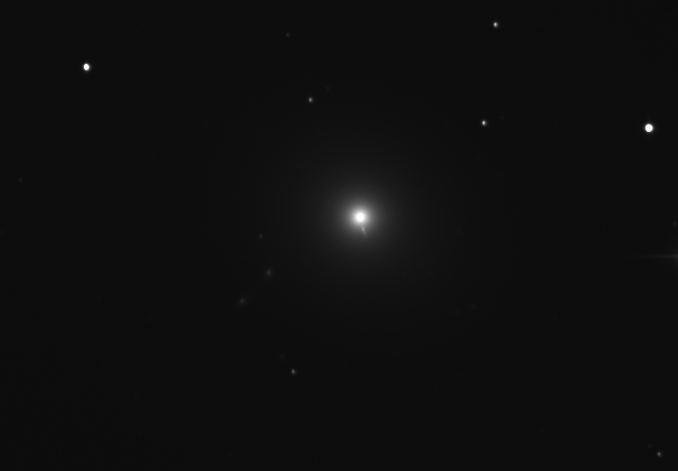I’m standing down the observatory for some much needed maintenance. Hopefully, it should only be 3-4 days.
Once again the diminutive FOV of my system does not lend itself to extended objects. Thus, it does not do the Heart Nebula justice. In fact this image only shows the central part of the heart shaped portion of IC 1805. However, it does show the small very young cluster of stars (Melotte 15) that ‘lights up’ the nebula. Several of the stars have estimated masses in excess of 50 times that of the Sun and it is those stars whose extreme output provides the energy to excite the surrounding hydrogen cloud into emitting the familiar red light. The energy is also what is sculpting the surrounding cloud into the fanciful shapes visible in the image.
This image is taken through a Hydrogen-Alpha filter that limits the light passing through to that with a wavelength of 656.28 nm. In addition to distinctly showing where the energized hydrogen is located, it also is one way to limit the effect of a nearly full Moon and common light pollution. This image was taken on a full Moon night.
The SkySentinel camera captured a bolide Monday morning just after 0200. Eight people reported the event on the American Meteor Society web site. Several reported it fragmented, but it must have done that after it hit my treeline.
This globular cluster is located in the constellation Delphinus (the Dolphin) at a distance of 135,000 LYs. That distance is 5 times the distance from the Sun to the center of our galaxy. The clusters great distance and very eccentric orbit may indicate it was captured from one of the many dwarf galaxies that the Milky Way captured during its lifetime. Note the numerous background galaxies visible.
I haven’t had the chance to do much imaging lately so I stepped into my WABAC machine and dug up an image from the archive.
The large nebulous object in the image is M87, a very large elliptical galaxy visible in the constellation Virgo. Elliptical galaxies are visually quite un-remarkable. Spherical, featureless and usually devoid of gas, these galaxies consist of very old stars. The lack of gas results in little to no stellar creation. All this leads to a fairly bland appearance.
So, why did I take a set of images of this one?
Every once in a while, I will try to image something unusual just for the challenge. Most of the time the local light pollution combined with the small aperture of my telescope prove too much for the intended target.
But, not this time.
Although discovered in 1781 by comet hunter Charles Messier it wasn’t until 1947 that the galaxy was identified as a powerful radio source. Photography showed a visible jet of material and it was suggested the jet was the source of the radio energy. Further investigation showed the galaxy was a very strong X-ray and Gamma ray source as well. Hidden deep within the halo of stars that make up M87 is a beast. A supermassive black hole at the center of the galaxy powers the jet and provides the energy for the X-ray and Gamma ray emissions. My equipment cannot image the black hole, the X-rays or Gamma rays, so my personal challenge was to image the jet.
I had tried several times before but it always seemed that I could not capture enough light. I took a lot of exposures and stretched the combined stack well beyond a pleasing image but just couldn’t find it. I kept thinking that I would have to get a larger telescope. (I do need a larger telescope.)
It was then the jet revealed itself. The jet is only 5000 light years long. The galaxy is much much larger. So only by reducing the overall brightness does the jet, buried deep in the galaxies glow, finally become visible. I had been looking too far from the galaxies core.
The image is ten 300 second exposures.
![The Heart Nebula (IC 1805 detail) [Ha:67x120s ]](https://ptobservatory.com/wp-content/uploads/2016/11/str_crv_dcv_ddp_IC-1805-1024x690.jpg)

![NGC 7006 [C:35x30s]](https://ptobservatory.com/wp-content/uploads/2011/01/str_dcv_ddp_NGC-7006-1024x690.jpg)


